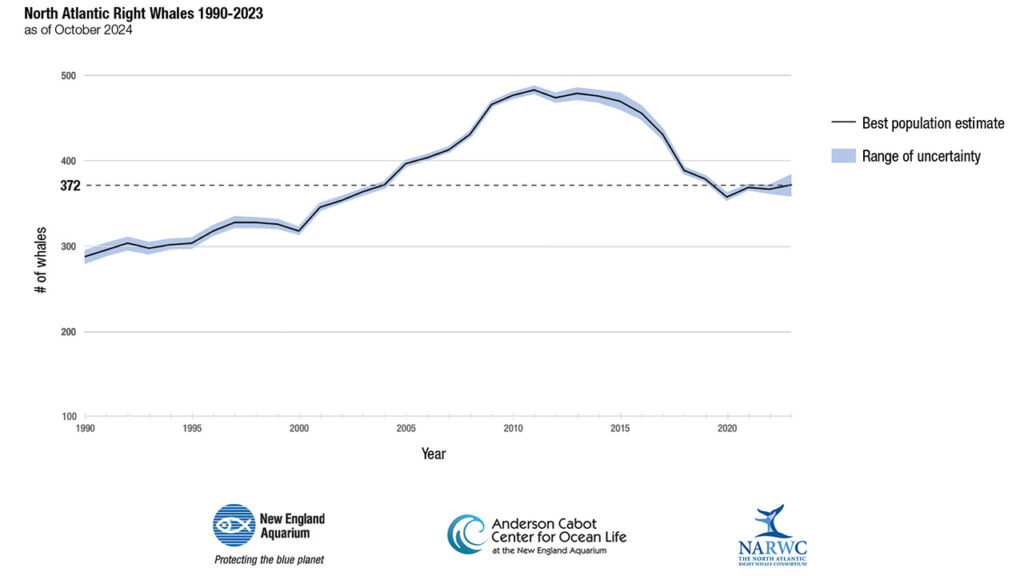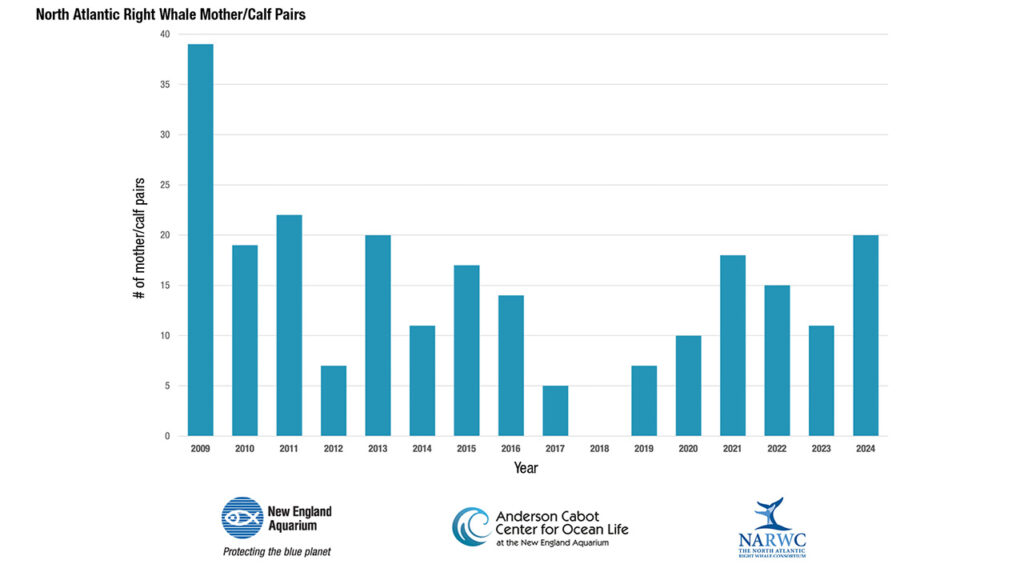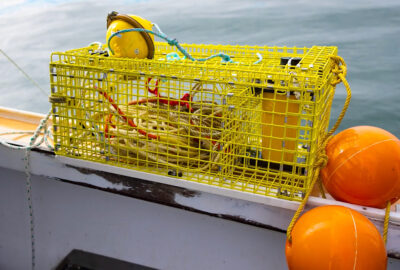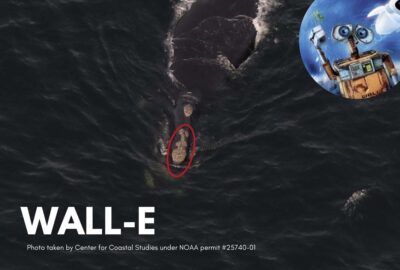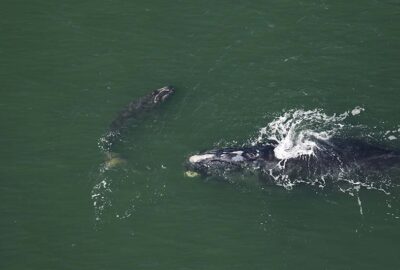As the North Atlantic Right Whale Population Slowly Increases, Human Activity Remains a Serious Threat
By New England Aquarium on Tuesday, October 22, 2024

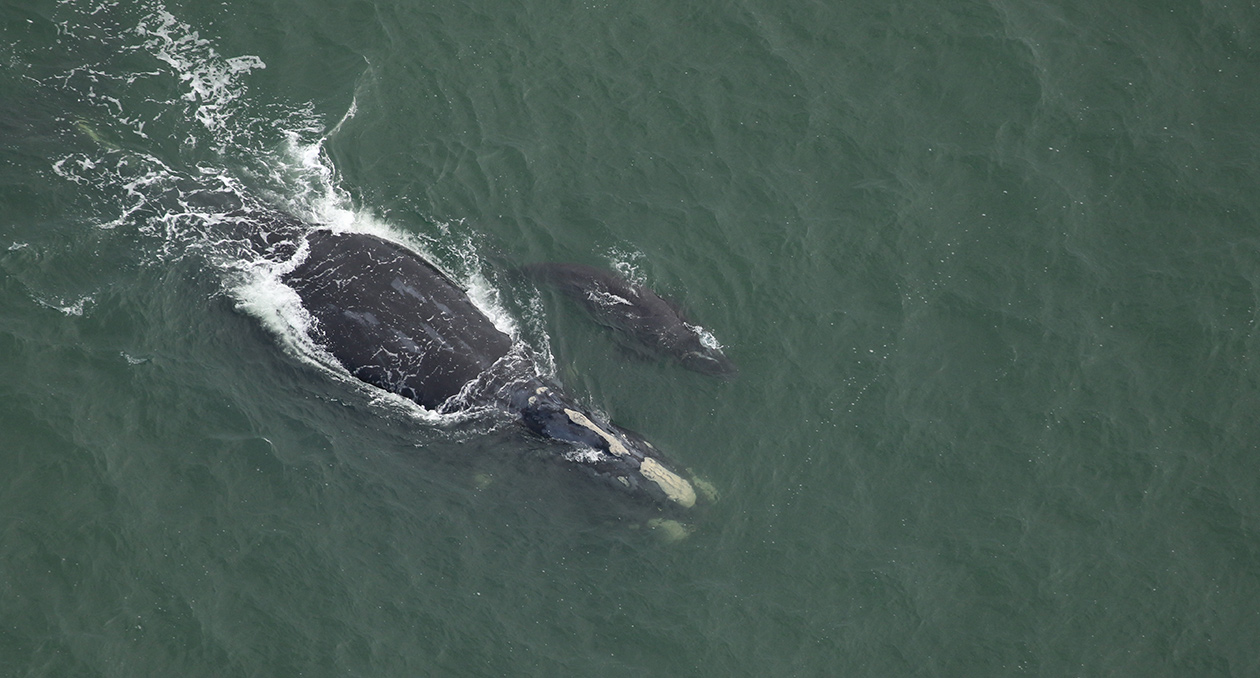
The critically endangered North Atlantic right whale population has continued its slow increase from a low of 358 individuals in 2020, according to the most recent estimate from the North Atlantic Right Whale Consortium. But scientists are hesitant to celebrate. The population of North Atlantic right whales—one of the world’s most endangered large whale species—remains significantly smaller than it was a decade ago. And while right whale births increased compared to recent years, so did right whale deaths caused by human activities.
At their annual meeting each October, the North Atlantic Right Whale Consortium releases the annual population numbers for the species using the most up-to-date data, including an estimate for the most recent year as well as updated numbers for previous years. Because many of the 2022 calves have been added to the Right Whale Catalog in the last year, the 2022 population number was recalculated from an estimate of 356 (range of error +7/-10) to 367 (+4/-4).
Calves known to be born are only added to the North Atlantic Right Whale Catalog if the calf is photographed well enough while with its mother to be re-identified with photographs from subsequent years. This may never happen, or may take several years of subsequent photographs to confidently link newer sightings to that calf. For this reason, there will usually be delays in cataloging calves and thus incorporating them into the population estimate.
This year, the 2023 population model accounts for new calves sooner rather than waiting for them to be cataloged. The newly released population estimate for 2023 is 372 (+11/-12), including 12 calves from 2023. These estimates are the result of a collaboration between scientists from the New England Aquarium’s Anderson Cabot Center for Ocean Life and the National Oceanic and Atmospheric Administration (NOAA), which has calculated and tracked trends in the right whale population since 1990. The details of the population estimate can be found in the NOAA Tech Memo.
“After seven years of steady decline from 2013 to 2020, this reversal in the trend of the population over the last few years is welcome news. I wish we could infer that this paints a rosy picture for the future, but the 2024 mortalities and serious injuries are sobering,” said Philip Hamilton, senior scientist at the New England Aquarium’s Anderson Cabot Center and the identification database curator for the Consortium. “While the whales may be adapting to a rapidly changing environment, the continued high level of mortality and serious injury clearly shows we must continue to adapt and evolve our management.”
Right Whale Mortalities
The number of 2024 right whale mortalities was especially alarming considering a number of them included birthing females and calves, which are crucial to helping the population rebound. There were five documented mortalities and four lost calves that scientists presume are dead, the highest annual mortality count since 2019 and the third highest count on record.
Chronic entanglement was determined to be the cause of death for three-year-old female Catalog #5120. She was entangled for more than 17 months and malnourished (entanglements can make it harder for right whales to feed) when she was found dead with a rope deeply embedded in her tail in January 2024.
Another three whales were killed by vessel strikes. One was female right whale #1950 who had recently given birth to her sixth calf. The calf, who was still dependent on her, is presumed dead. The 2024 calf of right whale “Juno” (#1612) was also struck by a vessel and suffered significant propeller cuts to her head before being found dead in March 2024.
One of the whales could not be retrieved for assessment, so the cause of death could not be determined.
This high mortality total will impact the 2024 population estimate when generated next year—and the actual total mortality could be even greater than we know. Scientists found that about two-thirds of all right whale deaths go undetected in an analysis of previous years.
Human Impacts
In addition to these deaths, our scientists have documented a minimum of 13 significant human-caused injuries to right whales in 2024 so far. Two were wounded by vessel strikes, seven were actively entangled in fishing gear, and four had injuries from recent entanglements but were free of gear. These injuries can be identified thanks to the detailed data our scientists collect about individual right whales and their condition at each sighting.
Despite efforts by conservationists, scientists, government agencies, and the fishing and shipping industries from the United States and Canada to protect the right whales, entanglements and vessel strikes continue to threaten the species, and more work needs to be done. Promising solutions, which would allow both right whales and the blue economy to thrive, include investing in ropeless or “on-demand” finishing technology and vessel speed restrictions.
“While entanglements remain the leading cause of death and injury, this year there were at least six vessel strike-related injuries/deaths, highlighting the importance of addressing this issue soon. The persistent aggregation of more than 50 right whales in the New York shipping lane this summer underscores this even further,” said Heather Pettis, a research scientist in the Anderson Cabot Center and the chair of the North Atlantic Right Whale Consortium.
Right Whale Calves
Each year, the right whale scientists at the Aquarium’s Anderson Cabot Center for Ocean Life help identify new right whale mothers and maintain a detailed list of right whale mother-and-calf pairs, complete with family histories for each calf.
During the most recent calving season (December 2023 – March 2024), 20 calves were born, the highest number in a decade! However, this encouraging news is tempered by the fact that five calves did not survive past the spring, and the number remains below the average of 24 calves born per year in the early 2000s.
This past season, four of the mothers gave birth for the first time, a heartening statistic given the recent trend of females delaying their first calving.
“The 2024 calving year was an emotional roller coaster ride for those of us in the right whale community, with relatively high numbers of births and deaths. It ended on a high note with a mother named Pico (#3270) detected with a calf in June offshore of Virginia. We approach the upcoming 2025 calving season (starting December 2024) with both excited anticipation and concern,” said Hamilton.
About The North Atlantic Right Whale Consortium
Started in 1986 as a collaborative data-sharing group, with the New England Aquarium as a founding member, the North Atlantic Right Whale Consortium includes research and conservation organizations, shipping and fishing industries, technical experts, US and Canadian government agencies, and state and provincial authorities, all of whom are dedicated to the conservation and recovery of the North Atlantic right whale. The Consortium is internationally recognized and has been identified as a model for establishing other species-related consortia.
Learn More About the North Atlantic Right Whale Consortium »

